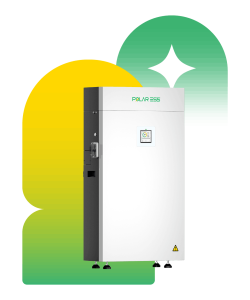As more homeowners and businesses adopt solar energy, safety becomes a common concern—especially when it comes to storing power. Many of our customers ask, are battery energy storage systems safe? This is a very valid question, and at Polar ESS, we always aim to provide clear and accurate information backed by technology and experience. Battery safety is not only a technical requirement, but also a critical part of user trust and product reliability.
With the growth of residential and commercial solar adoption, energy storage has become essential for managing consumption, storing excess solar power, and ensuring backup power during outages. Our all-in-one hybrid energy storage systems are built with safety in mind, combining smart lithium battery modules with integrated software and inverters to ensure stability, performance, and protection.
Table of Contents
ToggleHow We Ensure Safety in Energy Storage
So, are battery energy storage systems safe when used in homes or businesses? Yes—especially when designed with proper engineering, built-in protections, and real-time monitoring. At Polar ESS, we use lithium iron phosphate (LFP) chemistry, which is known for its thermal and chemical stability. Compared to older battery types, LFP offers a safer performance profile with a lower risk of overheating or combustion.
Additionally, our hybrid ESS products include multi-layer protection mechanisms, such as over-voltage, over-current, temperature, and short-circuit safeguards. The built-in battery management system (BMS) and our intelligent energy management software work together to monitor and control every aspect of the storage process. This allows users to access energy insights in real time and receive alerts if unusual behavior occurs, giving them peace of mind while using stored energy.
Traditional Storage Systems vs. Polar ESS All-in-One Solution
When comparing traditional storage setups to our all-in-one hybrid ESS, the difference in safety and convenience is clear. Conventional systems often require separate components—batteries, inverters, and controllers—from different vendors. This may result in compatibility issues and complicate safety monitoring.
Our all-in-one solution integrates all major components—solar inverter, battery pack, BMS, and EMS—into a single compact unit. This design minimizes wiring complexity and improves internal communication among components, which significantly enhances safety. The system is also designed to scale with your needs, supporting applications from residential homes to small commercial buildings. By combining hardware and software in one package, we reduce potential points of failure and streamline the entire energy storage process.
Conclusion
At Polar ESS, we understand the importance of safety in renewable energy applications. So, when customers ask, are battery energy storage systems safe, we are confident in saying yes—our systems are designed with advanced safety protocols, stable lithium iron phosphate technology, and intelligent monitoring features.
Our all-in-one hybrid energy storage products are engineered for residential and commercial users who value efficiency, reliability, and peace of mind. With integrated hardware and software, our systems offer more than just energy savings—they provide a safer, smarter way to store solar power. As we continue to innovate, we remain committed to supporting our partners with trustworthy technology and responsive service.


